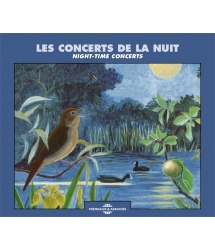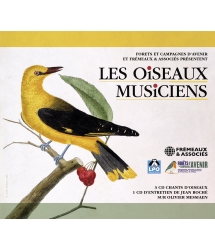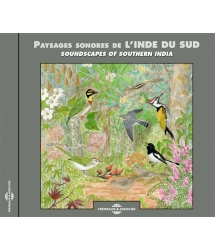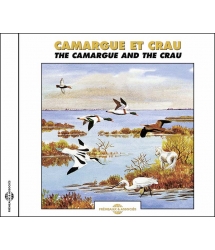- Our Catalog
- Philosophy
- Philosophers of the 20th century and today
- History of Philosophy (PUF)
- Counter-History and Brief Encyclopedia by Michel Onfray
- The philosophical work explained by Luc Ferry
- Ancient thought
- Thinkers of yesterday as seen by the philosophers of today
- Historical philosophical texts interpreted by great actors
- History
- Books (in French)
- Social science
- Historical words
- Audiobooks & Literature
- Our Catalog
- Jazz
- Blues
- Rock - Country - Cajun
- French song
- World music
- Africa
- France
- Québec / Canada
- Hawaï
- West Indies
- Caribbean
- Cuba & Afro-cubain
- Mexico
- South America
- Tango
- Brazil
- Tzigane / Gypsy
- Fado / Portugal
- Flamenco / Spain
- Yiddish / Israel
- China
- Tibet / Nepal
- Asia
- Indian Ocean / Madagascar
- Japan
- Indonesia
- Oceania
- India
- Bangladesh
- USSR / Communist songs
- World music / Miscellaneous
- Classical music
- Composers - Movie Soundtracks
- Sounds of nature
- Our Catalog
- Youth
- Philosophy
- News
- How to order ?
- Receive the catalog
- Manifesto
- Dictionnary











- Our Catalog
- Philosophy
- Philosophers of the 20th century and today
- History of Philosophy (PUF)
- Counter-History and Brief Encyclopedia by Michel Onfray
- The philosophical work explained by Luc Ferry
- Ancient thought
- Thinkers of yesterday as seen by the philosophers of today
- Historical philosophical texts interpreted by great actors
- History
- Books (in French)
- Social science
- Historical words
- Audiobooks & Literature
- Our Catalog
- Jazz
- Blues
- Rock - Country - Cajun
- French song
- World music
- Africa
- France
- Québec / Canada
- Hawaï
- West Indies
- Caribbean
- Cuba & Afro-cubain
- Mexico
- South America
- Tango
- Brazil
- Tzigane / Gypsy
- Fado / Portugal
- Flamenco / Spain
- Yiddish / Israel
- China
- Tibet / Nepal
- Asia
- Indian Ocean / Madagascar
- Japan
- Indonesia
- Oceania
- India
- Bangladesh
- USSR / Communist songs
- World music / Miscellaneous
- Classical music
- Composers - Movie Soundtracks
- Sounds of nature
- Our Catalog
- Youth
- Philosophy
- News
- How to order ?
- Receive the catalog
- Manifesto
- Dictionnary
PIERRE HUGUET
Ref.: FA675
EAN : 3448960267526
Artistic Direction : PIERRE HUGUET
Label : Frémeaux & Associés
Total duration of the pack : 1 hours 3 minutes
Nbre. CD : 1
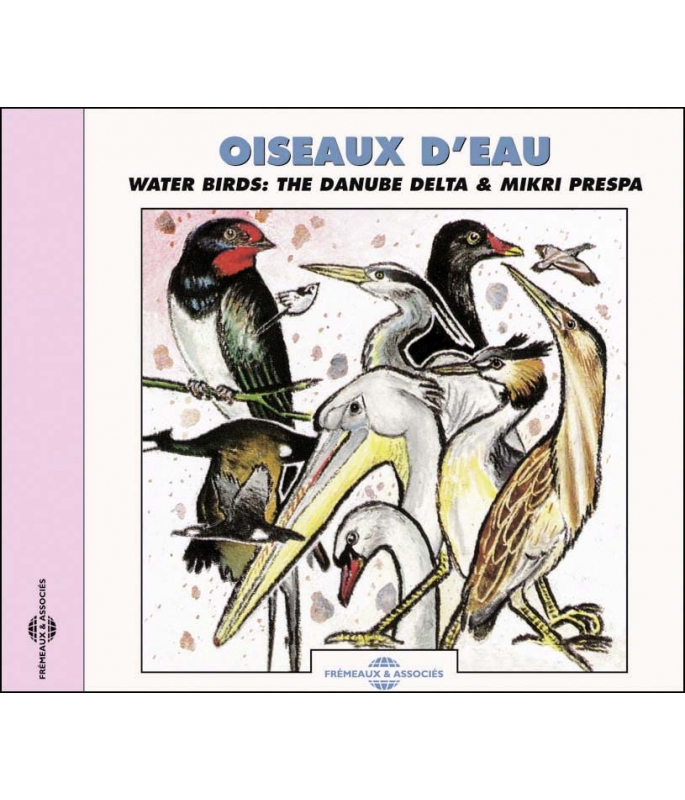
“Two nature concerts, without any commentary, each lasting 32 minutes, transport you from the Black Sea to the Balkans. Sixty eight reference numbers, combined with the details in the enclosed booklet, will enable you to identify the thirty eight different species. Recorded by Pierre Huguet with the help of the French Ministry of the Environment.” Patrick Frémeaux
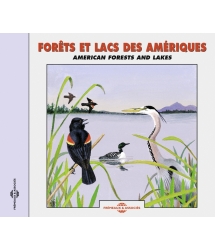
AMERICAN FORESTS AND LAKES
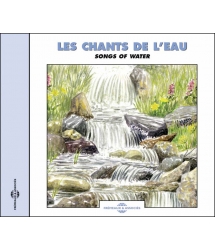
SONGS OF WATER
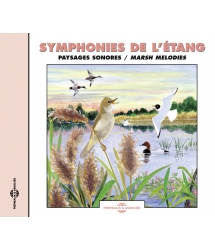
MARSH MELODIES
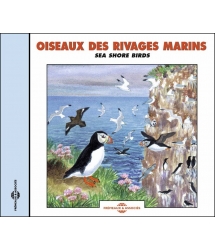
SEABIRDS - SEA SHORE BIRDS




-
PisteTitleMain artistAutorDurationRegistered in
-
1Vagues De La Mer NoireBlack sea waves00:00:181993
-
2Goéland argentéHerring Gull (Larus argentatus)00:01:321993
-
3Échasse blancheBlack-winged Stilt (Himantopus himantopus)00:01:191993
-
4Chevalier gambetteCommon Redshank (Tringa totanus)00:01:251993
-
5Sterne pierregarinCommon Tern (Sterna hirundo)00:00:521993
-
6Sterne pierregarinCommon Tern (Sterna hirundo)00:01:181993
-
7Fauvette GriseCommon Whitethroat (Sylvia communis)00:00:261993
-
8Pouillot fitisWillow Warbler (Phylloscopus trochilus)00:00:421993
-
9Cygne tuberculé en volMute Swan flying (Cygnus olor)00:00:191993
-
10Pouillot fitisWillow Warbler (Phylloscopus trochilus)00:00:231993
-
11Corneille manteléeHooded Crow (Corvus (corone) cornix)00:00:471993
-
12Fauvette épervièreBarred Warbler (Sylvia nisoria)00:00:151993
-
13Rainette VerteTree frog00:00:321993
-
14Oie cendréeGreylag Goose (Anser anser)00:01:191993
-
15Mouette rieuseBlack-headed Gull (Larus ridibundus)00:00:341993
-
16Guifette moustacWhiskered Tern (Chlidonias hybridus)00:00:401993
-
17Grèbe jougrisRed-necked Grebe (Podiceps grisegena)00:00:391993
-
18Rousserolle turdoïdeGreat Reed-Warbler (Acrocephalus arundinaceus)00:01:151993
-
19Sterne pierregarinCommon Tern (Sterna hirundo)00:01:421993
-
20Chevalier gambetteCommon Redshank (Tringa totanus)00:01:521993
-
21Chevalier gambetteCommon Redshank (Tringa totanus)00:00:371993
-
22Grenouille VerteEdible Frog00:02:381993
-
23Vanneau huppéNorthern Lapwing (Vanellus vanellus)00:01:131993
-
24Échasse blancheBlack-winged Stilt (Himantopus himantopus)00:01:281993
-
25Oie cendréeGreylag Goose (Anser anser)00:01:081993
-
26Héron pourpréPurple Heron (Ardea purpurea)00:00:511993
-
27Grèbe castagneuxLittle Grebe (Tachybaptus ruficollis)00:01:451993
-
28Foulque Macroule 1Common Coot (Fulica atra)00:00:511993
-
29Hirondelle De CheminéeBarn Swallow (Hirundo rustica)00:00:501993
-
30Coucou grisCommon Cuckoo (Cuculus canorus)00:00:451993
-
31Hirondelle De CheminéeBarn Swallow (Hirundo rustica)00:00:331993
-
32Attelage HippomobileHorse And Cart00:00:261993
-
33Alouette des champsSkylark (Alauda arvensis)00:00:231993
-
34Prespa Lake00:00:211993
-
35Poule d'Eau au loinMoorhen far away (Gallinula chloropus)00:01:051993
-
36Rossignol philomèleNightingale (Luscinia megarhynchos)00:00:181993
-
37Grenouille VerteEdible Frog00:00:301993
-
38Rainette VerteCommon tree frog00:00:211993
-
39Héron BihoreauNight Heron (Nycticorax nycticorax)00:01:491993
-
40Foulque Macroule 2Common Coot (Fulica atra)00:00:191993
-
41Rousserolle turdoïdeGreat Reed-Warbler (Acrocephalus arundinaceus)00:00:411993
-
42Grèbe castagneuxLittle Grebe (Tachybaptus ruficollis)00:01:141993
-
43Foulque Macroule 3Common Coot (Fulica atra)00:01:281993
-
44Bouscarle de CettiCetti's Warbler (Cettia cetti)00:00:151993
-
45Grèbe huppéGreat Crested Grebe (Podiceps cristatus)00:00:251993
-
46Mésange charbonnièreGreat Tit (Parus major)00:00:281993
-
47Rossignol philomèleNightingale (Luscinia megarhynchos)00:02:191993
-
48Butor BlongiosLittle Bittern (Ixobrychus minutus)00:01:041993
-
49Huppe Fasciee & Rousserole turdoïdeHoopoe & great red wabler ()00:00:181993
-
50Grèbe castagneuxLittle Grebe (Tachybaptus ruficollis)00:00:191993
-
51Huppe fasciéeHoopoe (Upupa epops)00:00:161993
-
52Grand Cormoran En ParadeGreat Cormorant Display (Phalacrocorax carbo)00:00:331993
-
53Grand Cormoran Au NidGreat Cormorant At Nest (Phalacrocorax carbo)00:00:111993
-
54Rousserolle turdoïdeGreat Reed-Warbler (Acrocephalus arundinaceus)00:01:421993
-
55Héron Cendre Au NidGrey Heron At Nest (Ardea cinerea)00:00:251993
-
56Crapaud VertGreen Toad00:00:451993
-
57Aigrette GarzetteLittle Egret (Egretta garzetta)00:01:331993
-
58Héron Cendre Au NidGrey Heron At Nest (Ardea cinerea)00:01:411993
-
59Aigrette Garzette Au NidLittle Egret At Nest (Egretta garzetta)00:02:331993
-
60Foulque Macroule 4Common Coot (Fulica atra)00:00:541993
-
61Oie cendréeGreylag Goose (Anser anser)00:00:191993
-
62Foulque Macroule 5Common Coot (Fulica atra)00:01:001993
-
63Grèbe castagneuxLittle Grebe (Tachybaptus ruficollis)00:00:131993
-
64Foulque Macroule Claquement De Bec 6Common Coot (Fulica atra)00:00:301993
-
65Pelicans Blancs et Frisés au nidWhite Pelicans & Dalmatian Pelican at nest ()00:01:351993
-
66Fuligule Nyroca En VolFerruginous Pochard flying (Aythya nyroca)00:00:591993
-
67Mésange RemizPenduline Tit (Remiz pendulinus)00:02:111993
-
68BergerShepherd00:01:431993
OISEAUX D’EAU
OISEAUX D’EAU
WATER BIRDS: the danube delta & Mikri Prespa
Le delta du Danube (première partie)
Le delta du Danube est, avec la Camargue, le delta du Guadalquivir, celui de la Volga, et la mer de Wadden, l’une des plus grandes zones humides d’Europe, et parmi les plus belles et les plus diversifiées. Réserve de la Biosphère, et site Ramsar depuis l’adhésion de la Roumanie à la Convention en 1991, cette zone de quelques 650 000 hectares est divisée en zones de protection intégrale (53 000 ha), zones tampon (230 000 ha) et de transition (364 000 ha). La partie naturelle (340 000 ha) a également été inscrite sur la Liste du Patrimoine mondial en décembre 1991. Bien que des surfaces importantes du delta aient été asséchées pour l’agriculture, le site a été en grande partie préservé et les nombreuses espèces de faune et de flore qui s’y trouvent, sauvegardées. Depuis 1990, les autorités roumaines ont pris des dispositions pour protéger le delta des changements qui le menacent. Un plan de gestion est en cours d’élaboration, et des mesures prioritaires sont déjà appliquées. Principalement occupé par des roselières (peut-être les plus vastes du monde) et un entrelac de plans d’eau et de bras, le delta abrite plus de 160 espèces d’oiseaux nicheurs, en particulier cinq pour cent de la population totale de pélicans frisés. Il est aussi le refuge de mammifères menacés, notamment le vison d’Europe, le chat sauvage ou la loutre. Ses eaux sont également riches en poisson (quelque 75 espèces dont la majorité sont des espèces d’eau douce).
Le Lac Mikri Prespa (deuxième partie)
Le lac Mikri Prespa : une zone humide grecque d’importance internationale. Lorsqu’on aperçoit le lac Mikri Prespa, au détour de la route qui monte de Florina, en Macédoine, au nord de la Grèce, on en a le souffle coupé ! Niché au creux des montagnes, à 850 mètres d’altitude, ce lac aux eaux calmes est une véritable merveille de la nature. Le paysage forme une mosaïque avec la zone humide proprement dite, les terres cultivées au nord-est et, en surplomb, les pentes couvertes des forêts – forêts mixtes, à feuillage caduque et persistant jusqu’à 1200 mètres, cédant progressivement la place aux hêtres et aux sapins blancs jusqu’à 1800 mètres et, au sommet, des pâturages alpins souvent enneigés. Établi en 1974, le Parc national de Prespa, qui couvre une superficie de 25 850 hectares, comprend la zone humide, les forêts et les champs. Lorsqu’elle adhéra à la Convention de Ramsar en 1975, la Grèce inscrivit la zone humide formant le cœur du parc (5200 ha) sur la liste des zones humides grecques d’importance internationale. La richesse naturelle de Prespa est extraordinaire. Cette région correspond à la limite méridionale d’essences nord-européennes telles que le sapin blanc (Abies alba). Plus de 1200 espèces végétales ont été identifiées, notamment Centaurea prespana, plante endémique et plusieurs autres espèces rares et menacées d’extinction. On y trouve également plus de trente espèces de mammifères, au nombre desquelles l’ours brun (Ursus arctos), le loup (Canis lupus) et la loutre (Lutra lutra). La zone humide abrite également une grande diversité d’amphibiens, de reptiles et de poissons. Mais ce sont les oiseaux qui constituent la caractéristique la plus impressionnante de Prespa. Plus de 200 espèces d’oiseaux ont été observées dans la région, dont 130 viennent y nicher. Prespa abrite en outre des colonies de pélicans frisés et de pélicans blancs (Pelecanus crispus et P. onocrotalus), de grandes aigrettes (Egretta alba) et de cormorans pygmées (Phalacrocorax pygmaeus), uniques en Europe. Au printemps, d’importantes populations d’oiseaux migrateurs trouvent nourriture et repos dans les marais, les marécages et les roselières du lac. Le paysage et les espèces sauvages qui font aujourd’hui la richesse de Prespa sont nés de l’action conjuguée de la nature et de l’homme au fil des siècles. Aujourd’hui, 1600 personnes se répartissent dans les 11 villages alentour, vivant principalement de l’agriculture, de la pêche et de l’élevage.
Généralités
Les zones humides sont encore très souvent considérées comme des milieux insalubres, inhospitaliers voire maudits. Ces schémas de pensée hérités d’une histoire de plusieurs siècles où se sont succédées des périodes d’intense destruction sous le couvert notamment de la salubrité et de l’hygiène ne sont malheureusement pas encore dépassés. En effet, malgré les efforts et les progrès réalisés au cours des dernières décennies en faveur d’une meilleure reconnaissance des fonctions et des valeurs considérables des zones humides, beaucoup de ces zones sont en danger et avec elles les espèces qui leur sont inféodées, les paysages qu’elles nous offrent mais aussi les ambiances subtiles qu’elles réservent à ceux qui les fréquentent. Il est difficile de convaincre ceux qui n’ont pas encore eu la chance de parcourir ces milieux que leur conservation n’est pas qu’une revendication de quelques spécialistes, reconnaissable à la paire de jumelles qu’ils portent au cou, mais relève incontestablement de l’intérêt général et, pour utiliser une formule sans emphase, de la survie de l’humanité, pas seulement du développement des sociétés. Ces milieux contribuent utilement au maintient et même à l’amélioration des ressources en eau et limitent les effets des catastrophes naturelles telles que les sècheresses et les inondations ; ils sont un capital biologique particulièrement riche et sensible ; la beauté de leurs paysages est une source permanente d’intérêt pour les artistes, les poètes et les musiciens. Combien d’économies enfin reposent de façon significative sur l’utilisation des ressources naturelles très variées qu’ils procurent ?
La convention de Ramsar
La « Convention relative aux zones humides d’importance internationale, particulièrement comme habitats des oiseaux d’eau », également appelée Convention de Ramsar, du nom de la ville d’Iran où elle fut adoptée, en 1971, est un traité inter-gouvernemental qui constitue le cadre de la coopération internationale en matière de conservation des systèmes de zones humides. Elle compte des membres dans le monde entier. La Convention adopte une définition extrêmement large des zones humides, et s’applique à des types de biotopes très variés, notamment aux marais, marécages, tourbières, cours d’eau, aux régions côtières, et même aux récifs coralliens ! Parmi les sites inscrits sur la Liste des zones humides d’importance internationales de la Convention figurent également des zones humides dont la superficie peut varier de quelques milliers de mètres carrés à plusieurs millions d’hectares. L’importance internationale des sites est établie sur la base de critères écologiques, botaniques, zoologiques, limnologiques, ou hydrologiques. Les zones humides sont souvent des systèmes d’importance ou à caractère international. La coopération entre États s’impose donc si l’on veut en assurer efficacement la conservation. La Convention de Ramsar fournit aux gouvernements et aux organismes concernés un cadre définissant des obligations de conservation et d’utilisation rationnelle des ressources des zones humides au niveau national, de même que des mécanismes de coopération au niveau international.
Le disque
Ce disque n’est pas une collection de notes diphoniques inscrites sur une partition qu’interprètent autant d’oiseaux et de grenouilles accompagnés par le bruissement des roseaux et des feuilles sous le vent et le son métallique de gouttes d’eau au contact du sol ; il est une symphonie, témoin d’une harmonie globale, systémique pour reprendre le vocabulaire abscons des experts de l’écologie, composée de chants, de cris et de bruits parfaitement organisés. C’est à l’oreille qu’il fait appel pour faire comprendre et apprécier la nature en croisant la science, par l’exactitude des déterminations et la culture, par la mise en évidence de sa musicalité. Certes, il manque encore à cette représentation les odeurs tellement particulières aux zones humides ; ceux qui ont déjà vécu ces ambiances sonores sauront ce dont il s’agit ; pour les autres, auxquels d’adressent plus spécialement ces paysages sonores, puissent-ils se laisser convaincre et céder à une curiosité naturelle qui les conduira au bord du ruisseau, près du marais ou du lac, dans la prairie gorgée d’eau, ces milieux qui leur paraissent si redoutables et inhospitaliers. Et alors saisiront-ils le message que chercher à leur transmettre ce disque.
Textes : Bureau RAMSAR
Enregistrements, conception, post-production : Pierre Huguet / Remerciements à : Akriotis T. (Dr.) – Coquelet J.M. – Dubief M. – Gomoiu M.-T. (Dr.) – Kardasis G. – Katsadorakis G. – Katz M. – Lethier H. – Malakou M. – Meyer C. – Munteanu D. (Dr.) – Petridis J. – Savin F. – Smart M. – Spiropoulou R. – Steimer G. – Tsounis G. (Dr.) – Veillet B. // Centre Ornithologique Rhône-Alpes – Fédération Rhône-Alpes de Protection de la Nature
Illustrations du livret : Alexis Nouailhat
Pierre HUGUET
© 1993 Pithys - 2009 GROUPE FRÉMEAUX COLOMBINI SAS
English notes
The Danube Delta (part one)
Along with the Camargue in France, the Guadalquivir in Spain, the Volga in the Soviet Union and the Wadden Sea in Holland the Danube Delta is one of Europe’s most important wetlands and one of the most beautiful and diversified. A Biosphere reserve and Ramsar site ever since Romania became a Ramsar Convention signatory in 1991, the site covers some 650 000 ha divided in a totally protected zone (53 000 ha), a buffer zone (230 000 ha) and a transition zone (364 000 ha). The most natural part (340 000 ha) was declared a World Heritage site in December 1991. Even though large areas of the delta have been drained for agriculture, much of the area has been preserved and much of its fauna and flora protected. Since 1990 the Romanian authorities have taken steps to protect the delta from threatened changes. A management plan has been prepared and priority conservation measures are already being taken. Covered mainly by reedbeds (maybe the most extensive in the world) interlaced with open water and river courses; more than 160 species of birds the delta including 5% of the world population of Dalmation Pelicans. It’s also a refuge for endangered mammals, especially European Mink, Wild Cat and Otter. Its waters are rich in fish with some 75, many freshwater, species.
Lake Mikri Prespa (part two)
Lake Mikri Prespa: a Greek wetland of international importance. A first sight of Mikri Prespa on leaving the road that climbs above Florina, in Macedoine, in northern Greece is stunning. Nestled at the foot of the mountains, at an altitude of 850 metres, this still lake is a natural wonder. The landscape is a mosaic formed not only of the lake, but also of cultivated land to the north-east overlooked by wooded slopes – mixed deciduous and conifer forest up to 1 200 metres, progressively giving way to Beech and Common Silver Fir as high as 1 800 metres, replaced by often snow-covered Alpine meadows on the summits. The Prespa national park, established in 1974, covers 25 850 hectares of wetland, forest and fields. As soon as Greece adhered to the Ramsar convention in 1975, it included the wetlands forming the core area of the park (5 200 hectares) in the list of Greek wetlands of international importance. Prespa has an extraordinary wealth of wildlife. It’s on the southern limit of north European species such as the Common Silver Fir Abies alba. More than 1 200 species of plants have been identified here, notably the endemic Centaurea prespana, but also several rare and endangered ones. More than 30 species of mammal occur, among then the Brown Bear Ursus arctos, the Wolf Canis lupus and the Otter Lutra lutra. The wetlands are also home to a large diversity of amphibians, reptiles and fish. However it’s the birds that form the most impressive characteristic of Prespa. More than 250 species have been recorded in the area of which 140 breed. Prespa has colonies of Dalmatian Pelecanus crispus and White Pelicans P. onocrotalus, Great Egret Ardea alba and Pygmy Cormorant Phalacrocorax pygmaeus, unique in Europe. During the spring large numbers of migrants find refuge and food in the marshes, bogs and reedbeds around the lake. Today’s landscape and the rich wildlife of Prespa are a result of the joint action of nature and man over centuries; Today, 16 000 people live in the 11 villages around the lake with a livelihood based on livestock, cereals and fishing.
In general
Unfortunately, wetlands are still often considered as unhealthy, inhospitable, even bewitched places. These ideas, inherited from the past, are unhappy still promoted for their destruction in the pretext of health and hygiene. The result, despite the progress made over the last half century in better understanding of the function of wetlands, is that many wetlands, the species that occupy there as well as their landscapes and unique atmospheres that they provide, are in danger of disappearing. It’s very difficult to convince people who have never visited such areas that their conservation isn’t just the wish of a few specialists, identified by their having binoculars around their necks, but indeed in the interests of mankind, not only for social development but for man’s survival. Wetlands ultimately contribute and even improve water resources and help to limit the effects of natural phenomena such as droughts and floods; they are particularly rich and delicate biological assets; the beauty is a permanent inspiration for artists, poets and musicians. How much local economy depends to a large extent on the correct use of natural resources dependant on wetlands?
The Ramsar Convention
The “Convention concerning wetlands of international importance, particularly those habitats used by aquatic birds” otherwise known as the Ramsar Convention after the town in ran where it was first adopted, in 1971, is an international treaty that constitutes a framework for international cooperation in conserving wetlands. There are member states throughout the world. The convention adopts a very broad meaning of the term wetland, that applies to a very varied types of biotope; particularly marshes, bogs, peat bogs, water courses, coastal areas, and even coral reefs. Among those wetlands included on the list of wetlands of international importance, whose area could be anything from a few thousand square metres to several million hectares. The international importance of the sites is based on ecological criteria, either botanical, zoological, or hydraulic. Wetlands are often of international importance. This implies that cooperation between nations is necessary for effective protection. The Ramsar convention has provided governments and interested organisations a framework defining conservation obligations and rational use of wetlands on the national scale as well as ways of working on an international level.
The CD
This disk isn’t a mere collection of notes on a sheet of music interpreted by so many birds and frogs accompanied by the rustling of reeds or leaves in the wind and the metallic sound of raindrops hitting the ground; it’s a symphony, a witness of a global systematic harmony if we take the vocabulary of scientists, made up of perfectly organised songs, calls and noises. It’s by using the ear that its easier to understand and appreciate that nature is a science, by the precision of determination and culture, by showing its musicality. Of course, we aren’t able to reproduce here the characteristic odours of wetlands; those who already know their sounds will know their smells; but for those that don’t, to whom these sound landscapes are especially intended, maybe they’ll be seduced by the sounds and that their natural curiosity will take them next to a stream, near to a marsh or a lake; even flooded meadows, places that appeared so formidable and inhospitable. If so they this CD will have done its job.
Text: RAMSAR OFFICE
Translated in English by Tony WILLIAMS
Recorded and produced by Pierre HUGUET / Thanks to: Akriotis T. (Dr.) – Coquelet J.M. – Dubief M. – Gomoiu M.-T. (Dr.) – Kardasis G. – Katsadorakis G. – Katz M. – Lethier H. – Malakou M. – Meyer C. – Munteanu D. (Dr.) – Petridis J. – Savin F. – Smart M. – Spiropoulou R. – Steimer G. – Tsounis G. (Dr.) – Veillet B. // Centre Ornithologique Rhône-Alpes – Fédération Rhône-alpes de Protection de la Nature
Illustrations inside the booklet by Alexis Nouailhat
Pierre HUGUET
© 1993 Pithys - 2009 GROUPE FRÉMEAUX COLOMBINI SAS
Delta du Danube (première partie) / Danube Delta (part one)
Identification des espèces – index references
1. Vagues de la Mer Noire / Waves of the Black sea
2. Goëland argenté / Yellow-legged Gull / Larus argentatus
3. Échasse blanche / Black-winged Stilt / Himantopus himantopus
4. Chevalier gambette / Redshank / Tringa totanus
5. Sterne pierregarin / Common Tern / Sterna hirundo
6. Sterne pierregarin / Common Tern / Sterna hirundo
7. Fauvette grisette / Whitethroat / Sylvia communis
8. Pouillot fitis / Willow Warbler / Phylloscopus trochilus
9. Cygne tuberculé (en vol) / Mute Swan (in flight) / Cygnus olor
10. Pouillot fitis / Willow Warbler / Phylloscopus trochilus
11. Corneille mantelée / Hooded Crow / Corvus corone cornix
12. Fauvette épervière / Barred Warbler / Sylvia nisoria
13. Rainette verte / European Tree Frog / Hyla arborea
14. Oie cendrée (second plan) / Greylag Goose (in the background) / Anser anser
15. Mouette rieuse / Black-headed Gull / Larus ridibundus
16. Guifette moustac / Whiskered Tern / Chlidonias hybridus
17. Grèbe jougris / Red-necked Grebe / Podiceps griseigena
18. Rousserolle turdoïde / Great Reed Warbler / Acrocephalus arundinaceus
19. Sterne pierregarin / Common Tern / Sterna hirundo
20. Chevalier gambette / Redshank / Tringa totanus
21. Chevalier gambette / Redshank / Tringa totanus
22. Sonneur sp / Fire-bellied Toad sp. / Bombina sp. - Grenouille verte / Green Frog / Rana esculenta
23. Vanneau huppé / Lapwing / Vanellus vanellus
24. Échasse blanche / Black-winged Stilt / Himantopus himantopus
25. Oie cendrée (second plan) / Greylag Goose (in the background) / Anser anser
26. Héron pourpré / Purple Heron / Ardea purpurea
27. Grèbe castagneux / Little Grebe / Podiceps ruficollis
28. Foulque macroule / Coot / Fulica atra
29. Hirondelle de cheminée / Barn Swallow / Hirundo rustica
30. Coucou gris / Cuckoo / Cuculus canorus
31. Hirondelle de cheminée / Barn Swallow / Hirundo rustica
32. Attelage hypomobile
33. Alouette des champs / Skylark / Alauda arvensis
Mikri Prespa (seconde partie) – (part two)
Identification des index / index references
34. Lac Mikri Prespa / Lake Mikri Prespa
35. Poule d’eau (au loin) / Moorhen (in the distance) / Gallinula chloropus
36. Rossignol philomèle / Nightingale / Luscinia megarhynchos
37. Grenouille verte / Green Frog / Rana esculenta
38. Rainette verte / European Tree Frog / Hyla arborea
39. Héron bihoreau / Night Heron / Nycticorax nycticorax
40. Foulque macroule / Coot / Fulica atra
41. Rousserolle turdoïde / Great Reed Warbler / Acrocephalus arundinaceus
42. Grèbe castagneux / Little Grebe / Podiceps ruficollis
43. Foulque macroule / Coot / Fulica atra
44. Bouscarle de Cetti / Cetti’s Warbler / Cettia cetti
45. Grèbe huppé / Great Crested Grebe / Podiceps cristatus
46. Mésange charbonnière / Great Tit / Parus major
47. Rossignol philomèle / Nightingale / Luscinia megarhynchos
48. Butor blongios (aboiement) / Little Bittern (barking) / Ixobrychus minutus
49. Huppe fasciée et Rousserolle turdoïde / Hoopoe and Great Reed Warbler / Upupa epops, Acrocephalus arundinaceus
50. Grèbe castagneux / Little Grebe / Podiceps ruficollis
51. Huppe fasciée / Hoopoe / Upupa epops
52. Grand cormoran (en parade) / Great Cormorant (displaying) / Phalacrocorax carbo
53. Grand cormoran (au nid) / Great Cormorant (at the nest) / Phalacrocorax carbo
54. Rousserolle turdoïde / Great Reed Warbler / Acrocephalus arundinaceus
55. Héron cendré (au nid) / Grey heron (at the nest) / Ardea cinerea
56. Crapaud vert / Toad / Bufo viridis
57. Aigrette garzette / Little Egret / Egretta garzetta
58. Héron cendré (au nid) / Grey heron (at the nest) / Ardea cinerea
59. Aigrette garzette (au nid) / Little Egret (at the nest) / Egretta garzetta
60. Foulque macroule / Coot / Fulica atra
61. Oie cendrée / Greylag Goose / Anser anser
62. Foulque macroule / Coot / Fulica atra
63. Grèbe castagneux / Little Grebe / Podiceps ruficollis
64. Foulque macroule (claquement de bec) / Coot (bill-clacking) / Fulica atra
65. Pélicans blancs et frisés (au nid) / White and Dalmatian Pelicans (at the nest) / Pelecanus onocrotalus et P. crispus
66. Fuligule nyroca (en vol) / Ferruginous Duck (in flight) / Aythya nyroca
67. Mésange remiz / Penduline Tit / Remiz pendulinus
68. Berger / Shepherd
CD OISEAUX D’EAU © Frémeaux & Associés / Droits audio : Frémeaux & Associés - La Librairie Sonore (Producteur initial : Sittelle, Pithys, Collection Allain Bougrain Dubourg ou Ceba) / Ecouter les chants d'oiseaux sur CD : Sons et ambiances naturelles des écosystèmes - Stéreo and digital recording of the natural landscape sound. Natural sound sceneries of écosystems, Voices of the Wild Life. Les droits de cet enregistrement sont protégés par la loi. Pour toute exploitation d’illustration sonore sur CD, DVD, CD-Rom, Télévision, Cinéma, Sites internet, scénographies (théâtre, musées…), l’autorisation et un devis gratuit peuvent être obtenus auprès de Frémeaux & Associés – fax : +33 (0)1 43.65.24.22 info@fremeaux.com
